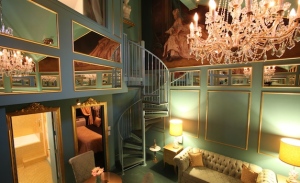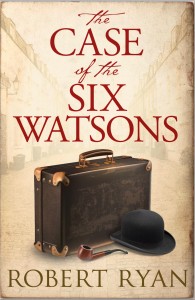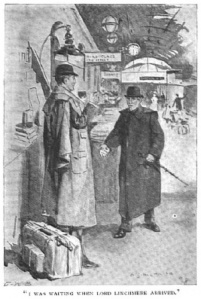I have just returned from a week touring the Hudson Valley and the Catskills in upstate New York. Most of it was for a piece for The Times and it was a very successful trip – good food, dramatic modern art, fantastic scenery, Robber Baron’s grand historic homes, and some possibly too close encounters with local wildlife. But one standout was the hotel we stayed in on the last night, mainly because it was so unexpected (it was the result of a tip-off from a native New Yorker who said: ‘Don’t ask questions, just book in’).
If you read a lot of the US travel press you might think that the recent renaissance of the Catskills – which is a few hours’ drive from Manhattan, up I-87 or 90 – means it’s a Williamsburg with trees and mountains, with a farm-to-fork restaurant at every junction, an antique Americana collection on every porch, a cool bar beside every creek. This isn’t true, there is a lot of driving around (by our standards at least) to sample the best of, say, Delaware County.
After a slightly disappointing first turn through district, the highlights being Andes (quaint, good vintage clothes, antiques, coffee and cookies) and Delhi (bookstores, covered bridges, more antiques) but not fly-blown Bloomville (Table on Ten restauarant and not much else), I thought maybe The Roxbury might not live up to its billing. However, there is often something about the typography and colour scheme of a place’s signboard that tells you that you are in safe hands. “Contemporary Catskill Lodgings” this one teased in limegreen and black and it delivered.
The Roxbury is a themed hotel, in that each of the 28 units is decorated to a particular brief, in this case a TV show or movie. Now, I’m not always a fan of themed rooms. Sometimes hoteliers think that all it takes is a hideous shagpile carpet, a lava lamp and a couple of DVDs and bam! The Austin Powers Suite. Or a bit of gold MDF and organza and you have the Arabian Nights room. That isn’t the case at The Roxbury Motel.
The owners, Greg Henderson and Joseph Massa both have theatrical backgrounds and it shows (Greg does concepts, Joseph is the craftsman) in the outlandish concoctions. What makes The Roxbury different is the attention to details – every room is done with passion and panache. Most are based on the sixties TV shows that were on constant re-run when the owners were growing up. So there is a Star Trek room, where the ceiling becomes the galaxy of dopplered stars as seen in warp drive, created by a massive coil of fibre optic lights in the roof space, and where the bathroom tiles glow to recreate the holodeck. For I Dream of Jeannie, the pair used an ancient Roman technique to create a perfect spherical space to represent the genie’s bottle. Gilligan’s Island is basically a huge inverted coconut cream pie as baked by Ginger and Mary Ann.
Best of all, though, is a three-bedroom stand-alone single-story house called The Digs. It was inspired by the purchase at auction of artifacts that were previously owned by a man who claimed to have worked for the Board of Education. Greg and Joseph discovered that they were from places such as Persia/Iran, the Far East and various destinations not open to the usual US tourist in the 50s and 60s. They decided the vendor had been a spy-cum-archeologist and so created a huge backstory which means The Digs is filled with the sort of items that might be boxed up at the end of Indiana Jones – and indeed there is a room with a ceiling full of bullwhips, snake wallpaper, a Mayan temple hiding a pull-down bed and a giant boulder above the lobby in homage to Indy. There’s also a fish tank so special it has featured on Animal Planet.
But here’s the thing: despite all the frivolity, the hotel work – the products are excellent, there are bathtubs as opposed to mere showers, the fabrics, tiles, lamps, ceiling fixtures are sourced from the best suppliers in the world, there’s a two-part spa (hot tub and sauna in one wing, steam and treatments in another) and the sheets are as good as those in the Four Seasons.
As if this wasn’t enough, the pair have also bought a slightly sagging antebellum mansion down the road (see https://vimeo.com/105388223), which sits right next to a dramatic gorge and waterfall and they plan to do much the same with it (albeit more in keeping with the estate’s history than, say, The Jetsons room). Having toured the site, their plans are either insanely ambitious or just… No, I suspect The Roxbury at Stratton Falls will be ready within the two to three years they have allowed themselves. And I’ll be back.
See http://www.theroxburymotel.com for rates. I flew with Virgin Atlantic (http://www.virgin-atlantic.com) and hired a car through Alamo. The ins and outs of a Hudson Valley fly-drive will be dealt with in The Times Travel piece.










